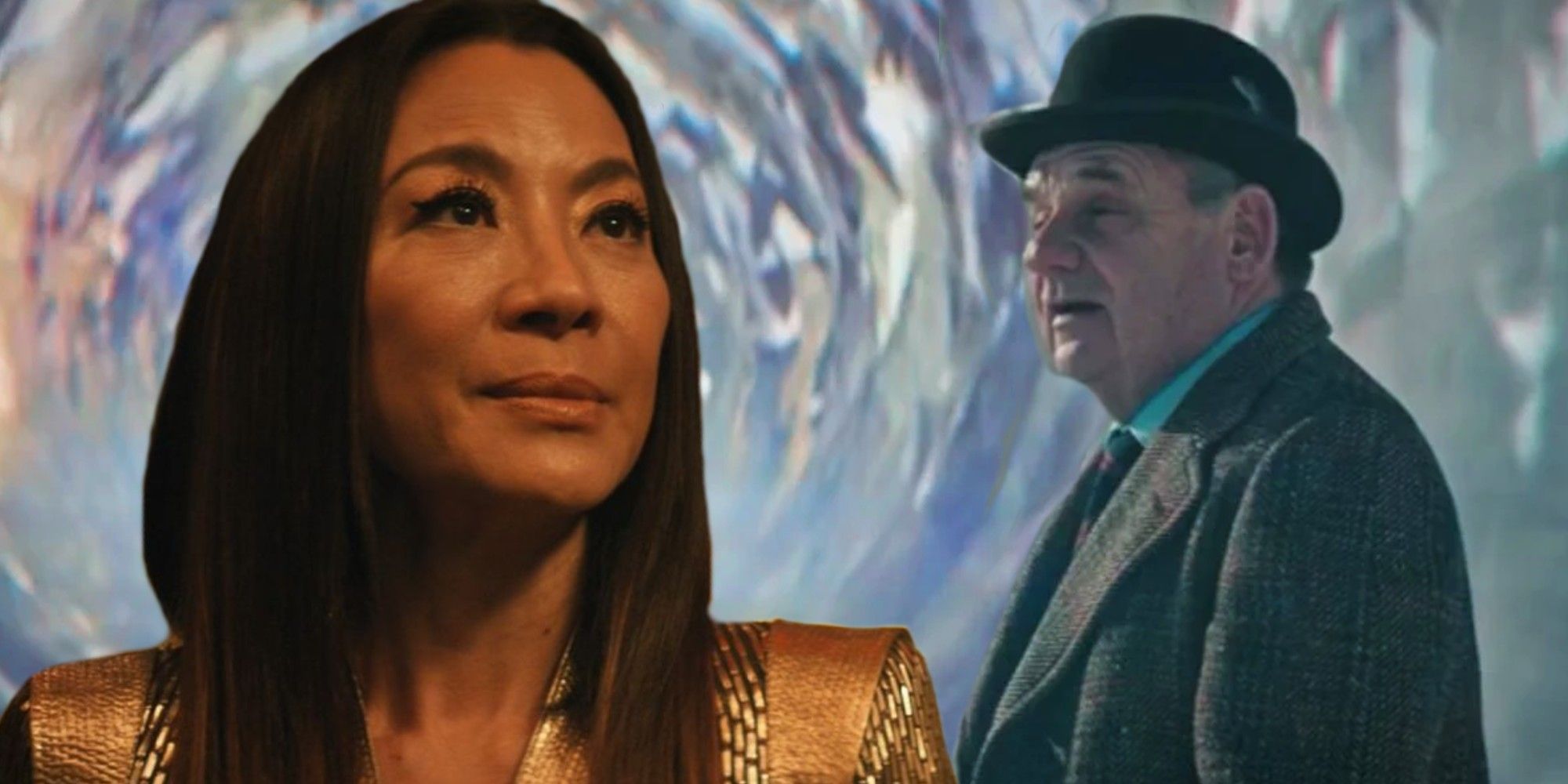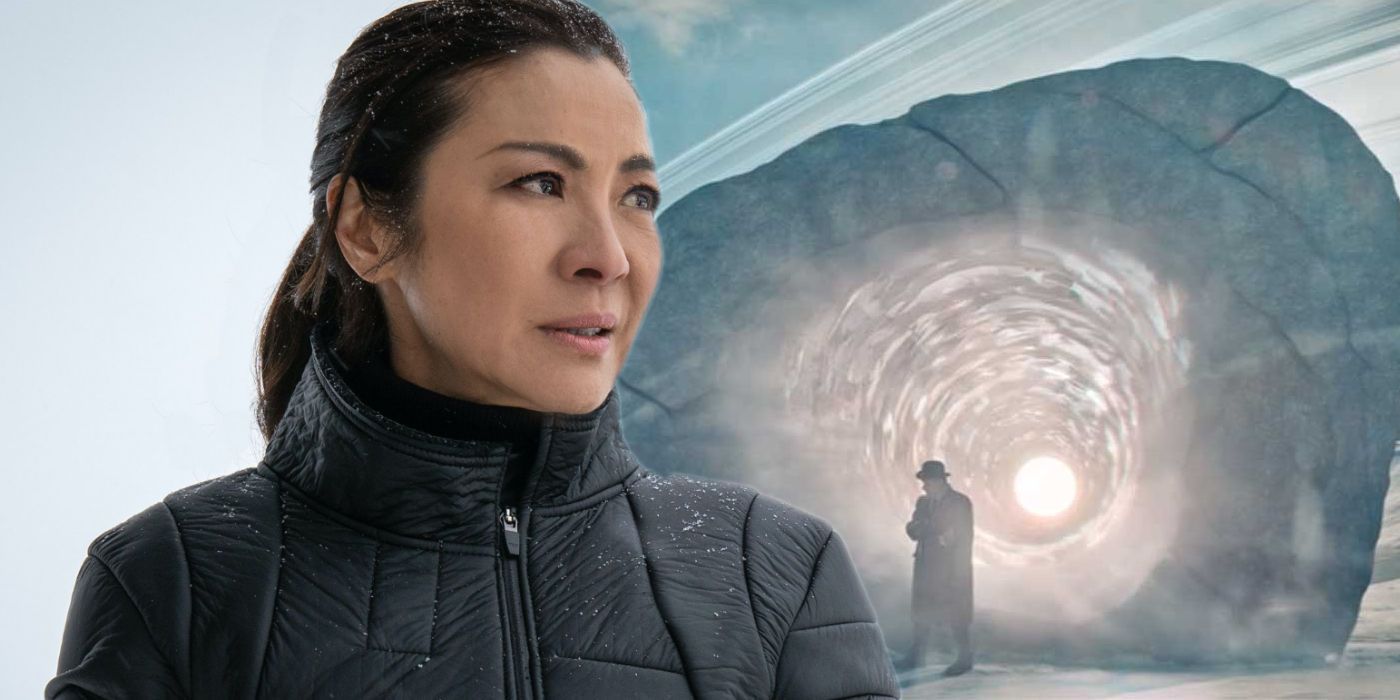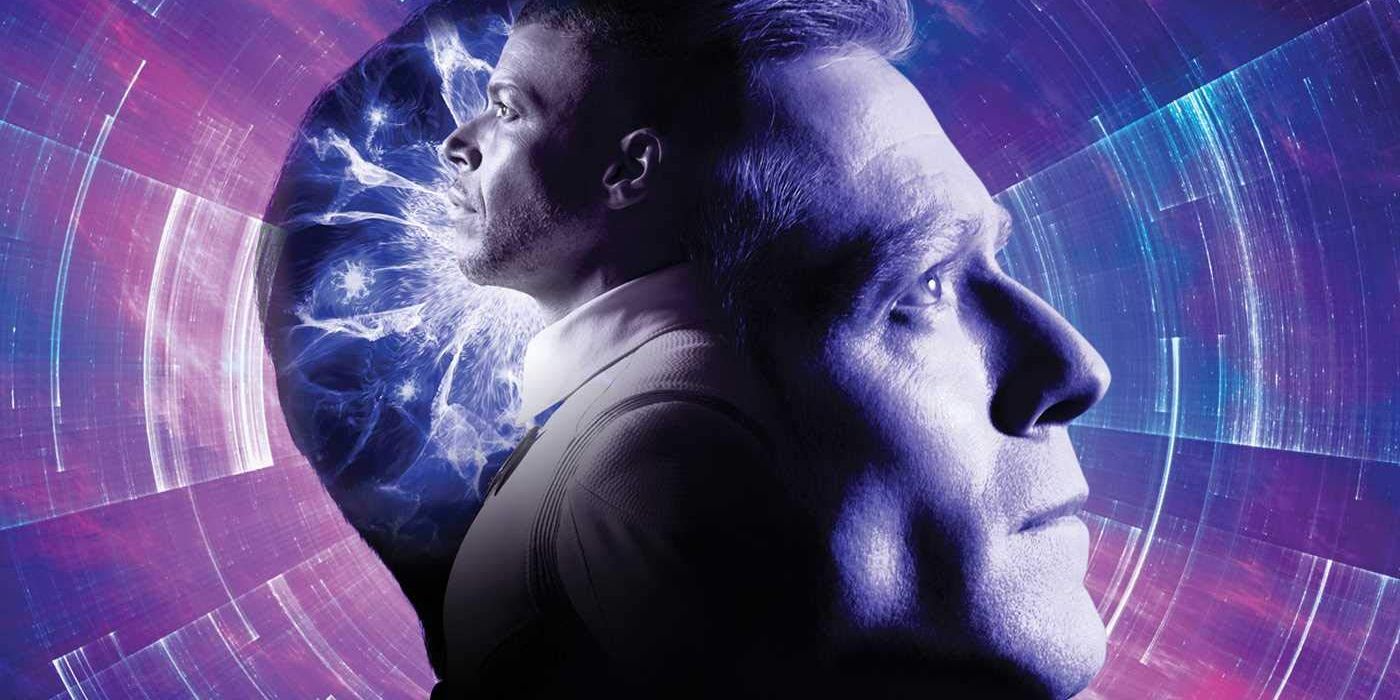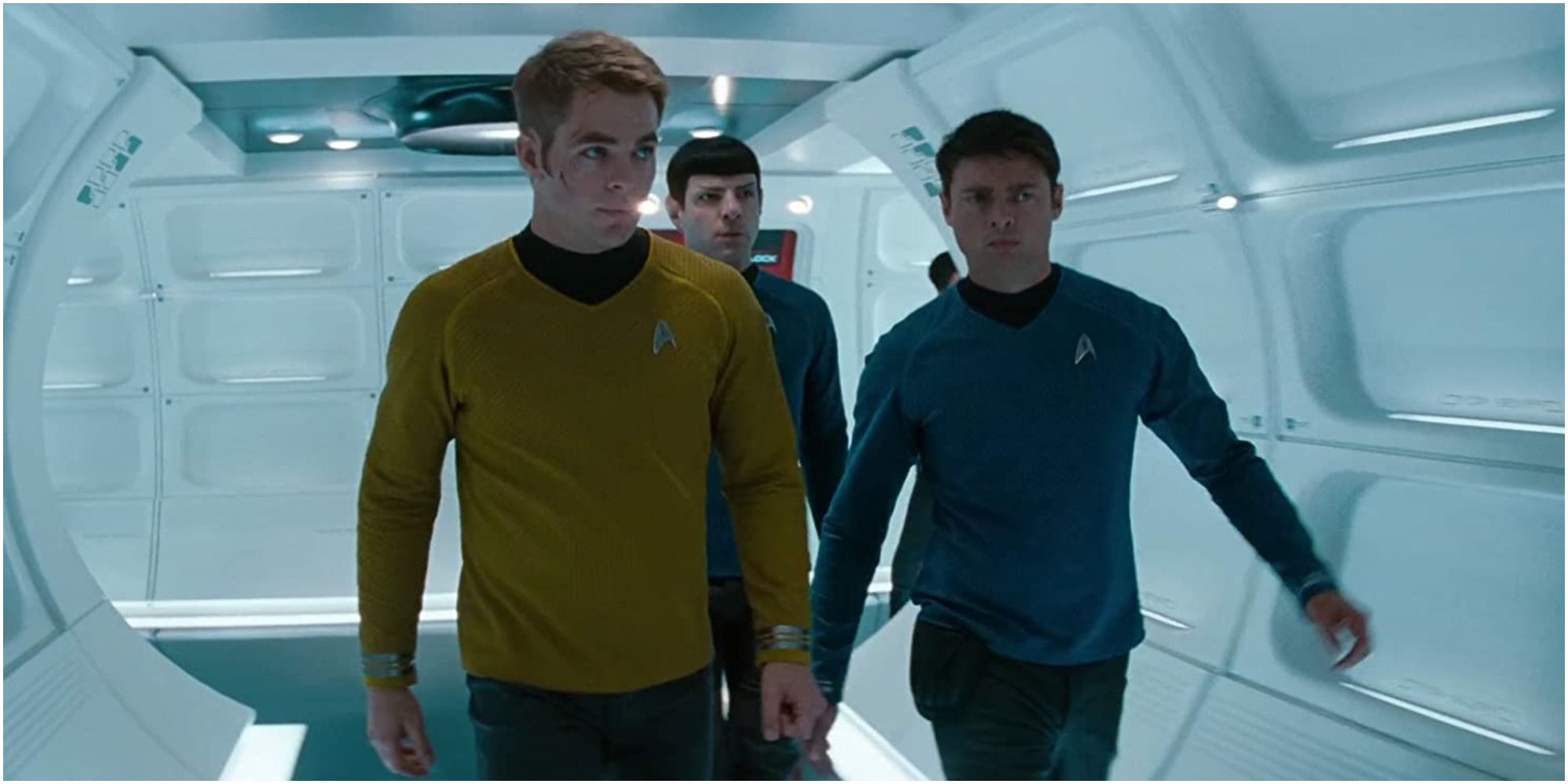The Star Trek franchise has finally embraced the Multiverse. Time travel is a common trope in science-fiction, fantasy, and even superhero franchises. In the real world, of course, time travel is purely theoretical; consequently, every franchise essentially makes up its own rules. It's actually pretty rare for even the most celebrated films and TV shows to handle time travel in a consistent manner, simply because writers are telling stories rather than trying to write pseudo-scientific textbooks. The rules of temporal mechanics tend to bend to the needs of the plot.
Star Trek has traditionally assumed there is a single, consistent timeline. Sometimes - as in the classic Star Trek: The Next Generation episode "Time's Arrow" - attempts to change history were always part of the timeline. When archaeologists discover Data's head, buried for centuries in San Francisco, the android insists this fate is unavoidable. "At some future date, I will be transported back to 19th century Earth, where I will die," he insists. "It has occurred. It will occur." He is proved to be correct, although thankfully the crew of the Enterprise is able to reactivate him using this ancient Data head. Other episodes have, however, suggested it is possible to change this single timeline, as in the famous original Star Trek episode "The City on the Edge of Forever" and Star Trek: First Contact. The most fascinating demonstration of this is seen in the Star Trek: Voyager episode "Year of Hell," where an alien develops a weapon that removes anything it targets from the timeline, with history changing around it.
But Star Trek: Discovery has subtly embraced a completely different model of time travel, the Multiverse model. This posits that there are an almost infinite number of alternate timelines, where events spun out in a different manner, and indeed that some of these branches are actually created as a result of time travel.
How Star Trek: Discovery Subtly Introduced The Multiverse Model
The concept of time travel lies at the center of Star Trek: Discovery season 2, with the USS Discovery blasted forward in time to the 32nd century. This time travel has had a particularly dangerous impact on Philippa Georgiou, who was already displaced by virtue of originating from the Mirror Universe, and her molecules are out of phase with reality itself. With Georgiou facing a painful death, in the two-part story "Terra Firma" she and Burnham seek out the fabled Guardian of Forever. Able to manipulate the fabric of spacetime at will, the Guardian sends Georgiou back to a version of the Mirror Universe in order to weigh her soul. It is when Georgiou returns that the Guardian of Forever subtly introduces the concept of the Multiverse, because he tells Georgiou that there is now "a version of you that's breathing your last breath in a Mirror Universe." Notice the precision of the Guardian's wording when he refers to "a" Mirror Universe, suggesting there are many branching timelines of that alternate dimension. When it comes to time travel and quantum mechanics, the Guardian of Forever is the closest thing Star Trek has to an omniscient narrator, so his analysis should be considered accurate.
As the scene continues, the Guardian of Forever drops another crucial piece of information. He tells Georgiou he is going to send her back "to a time when the Mirror Universe and the Prime Universe were still aligned." This is an explicit reference to out-of-universe models of the Star Trek timeline, with the designation "Prime Universe" used to the one seen in most of the films and TV shows and "Kelvin Timeline" referencing the JJ Abrams reboot, which was triggered by a number of time travelers. The designation confirms both timelines exist side by side.
Star Trek Books Had Already Hinted At The Multiverse
A tie-in novel for Star Trek: Discovery, Dave Galanter's Dead Endless, had already suggested the Multiverse exists as part of Star Trek lore. Traditionally, Star Trek books haven't been considered canon, but the creative team behind Star Trek: Discovery have been involved in the production of recent tie-ins, and have taken some trouble to ensure they fitted in. In fact, there have even been a handful of minor references to the books within the series itself. Dead Endless is unusual, however, in that readers gradually realized it was set in a different timeline. Here, Michael Burnham never rebelled and triggered war with the Klingons. While the USS Discovery and the USS Glenn are still conducting experiments using the mycelial plane, the crews aren't subjected to the pressure of war and are able to take a much slower, more cautious, and scientific approach.
According to Dead Endless, the mycelial network is the key to exploring the Multiverse. Indeed, the book sees this alternate USS Discovery encounter a body that is essentially a "Multiversal Federation," who even operate under a version of the Prime Directive by which they conceal their existence from pre-mycelial civilizations. Because experiments with the mycelial network were abandoned after the USS Discovery, these beings have never revealed themselves to the Federation of the Prime Universe.
Why Star Trek Has Introduced The Multiverse
This is a major change in Star Trek lore, but in truth, it's also a result of the natural evolution of the franchise's narrative since 2009. This year saw JJ Abrams attempt to relaunch the Star Trek franchise with a story in which the time travelers Nero and Spock created the so-called "Kelvin timeline," with the planet Vulcan destroyed and James T. Kirk becoming Captain of the USS Enterprise a little earlier. Abrams appeared to envision this timeline replacing the old one, but CBS took a different approach, continuing to tell stories set in the Prime Universe. Star Trek films and TV shows had previously existed as part of the same cohesive timeline, but now they had parted ways.
The Multiverse model explains just how this can work. The Prime timeline is the one seen in all the traditional Star Trek media, with its continuing story told in series like Star Trek: Picard and Star Trek: Discovery season 3. Abrams' Kelvin timeline branches out of it, existing alongside it. The two are not in competition with one another, but rather coexist neatly with each other as a result of this model of temporal mechanics. What's more, CBS and Paramount now have unlimited opportunity to reboot the franchise in any way they want, to explore different branched timelines if they ever feel Star Trek needs a fresh start again.




